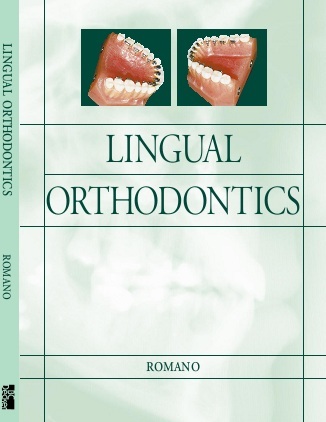 By
By
Rafi Romano, DMD, MSc, is a specialist in orthodontics and dentofacial orthopedics, earned at The Dental Faculty, Hebrew University, Hadassah Jerusalem. He is also an Invited Professor at the Department of Facial Orthopedics and Orthodontics, Specialization and Master course, University Paulista UNIP, Sao Paulo, Brazil. He is also Visiting Professor of Lingual Orthodontics at the University at Alcalá, Madrid, Spain.
It is surprising that this book is the first presenting the technique of lingual orthodontics, which has been practiced in various modes for over 20 years. This unusual hiatus probably reflects the position of the lingual orthodontics technique itself. Despite its reasonably long history, the technique has not yet achieved a mainstream position in the field of orthodontics. This book may help to change this situation, providing a unique resource for the clinician, an experienced orthodontist, a recent graduate, or an orthodontic program student interested in lingual orthodontics. Most orthodontists have not had first hand experience with lingual orthodontics, and this book would then serve as their introduction to the technique.
Book Description
Review
The book is excellent for those practitioners beginning the study of lingual orthodontics. It is divided into 17 chapters, written by a variety of practitioners. All chapters include numerous high-quality, full-color photographs demonstrating various cases and various technical approaches. The book also includes a good bibliography and index. The authors of the various chapters come from around the world – Denmark, France, Germany, Israel, Italy, Japan, Spain, and the USA. The book presents a comprehensive perspective, not a unified view, and some overlap among some of the chapters is also unavoidable, although efforts were made to organize the chapters into a logical progression. The first three chapters provide the Introduction, with a historical perspective by the late Craven Kurz as the opening chapter. The succeeding sections are Basic Principles, Treatment Approaches and Mechanics, and Laboratory Procedures. Combined, the 21 contributing authors provide an excellent review of the subject, including history, mechanics, extraction and non-extraction treatments, treatment of mixed dentition patients, interdisciplinary treatment, orthodontics in conjunction with orthognathic surgery, practice management, and laboratory procedures. As can be expected in a book with numerous authors, there are some variations in the quality of the individual chapters. Nevertheless, the ability to review cases treated by many different practitioners should be considered a major advantage of this book. One immediately realizes that many of the contributors are not “purists”; i.e., they practice the lingual technique to various degrees. Some would use lingual appliances only on the maxillary arch, and traditional buccal appliances on the mandibular arch. Others would use the lingual appliances on the anterior segments, and buccal, or combination lingual/buccal appliances on the buccal segments.
One should also credit the authors for being explicit in presenting some of the problems besetting the lingual orthodontics technique for many years: the technique is labor intensive, relative to labial orthodontics, and requires much longer chair-time. In addition, substantial laboratory work is typically required, e.g., the use of indirect bonding trays, which are practically a requirement. Therefore, the cost of treatment needs to be adjusted to reflect the increased time and laboratory costs. In addition, appliances and instruments required for effective use of this technique, do not have a good range of manufacturers at the present time, and the choices are very limited. Moreover, some of the instruments exclusively used for the lingual technique, may not be available any longer, as a result of the decline in demand. In addition, patient discomfort and difficulty in speech are still major disadvantages of the technique. Careful case selection will remain a necessity for those practicing lingual orthodontics in the foreseeable future.
This book may represent a new surge of interest in lingual orthodontics. The technique, which was introduced in the 1970’s and gained significant popularity (or at least good press) at that time, appeared to be in a major retreat a few years ago. This book may add to the momentum of renewed interest in lingual orthodontics. However, even the experienced orthodontist would not be able to effectively practice lingual orthodontics after reading this book. A good hands-on training course would be required. Still, the current book provides an excellent introduction.
Dr. Rafi Romano should be congratulated for publishing this volume, which is a useful addition to the orthodontic literature. This volume is likely to become the standard reference book for the lingual orthodontic technique.
Footnote: The book comes with an enclosed CD, reminding us all that the days of the printed book may be numbered. However, the format of the current CD is not useful.
Reviews made by Dr. Y-A Kook and Dr. Joseph Zernik
Download
Note: Only Dental member can download this ebook. Learn more here!




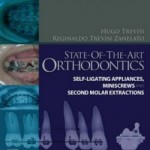
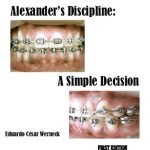
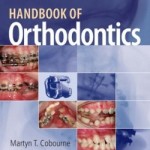
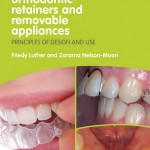
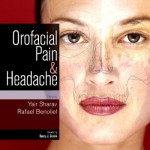

![[Free] SmartClip Self-Ligating Appliance System: Concept and Biomechanics](https://dental.downloadmedicalbook.com/wp-content/uploads/2013/09/smartclip-150x150.jpg)

thanks for share!
Good blogging!
hic, links was die.
New link added!
The link does not work anymore. Can we have a new link ?
fixed